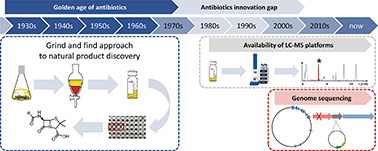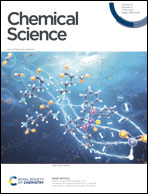Synergizing the potential of bacterial genomics and metabolomics to find novel antibiotics
Abstract
Antibiotic development based on natural products has faced a long lasting decline since the 1970s, while both the speed and the extent of antimicrobial resistance (AMR) development have been severely underestimated. The discovery of antimicrobial natural products of bacterial and fungal origin featuring new chemistry and previously unknown mode of actions is increasingly challenged by rediscovery issues. Natural products that are abundantly produced by the corresponding wild type organisms often featuring strong UV signals have been extensively characterized, especially the ones produced by extensively screened microbial genera such as streptomycetes. Purely synthetic chemistry approaches aiming to replace the declining supply from natural products as starting materials to develop novel antibiotics largely failed to provide significant numbers of antibiotic drug leads. To cope with this fundamental issue, microbial natural products science is being transformed from a ‘grind-and-find’ study to an integrated approach based on bacterial genomics and metabolomics. Novel technologies in instrumental analytics are increasingly employed to lower detection limits and expand the space of detectable substance classes, while broadening the scope of accessible and potentially bioactive natural products. Furthermore, the almost exponential increase in publicly available bacterial genome data has shown that the biosynthetic potential of the investigated strains by far exceeds the amount of detected metabolites. This can be judged by the discrepancy between the number of biosynthetic gene clusters (BGC) encoded in the genome of each microbial strain and the number of secondary metabolites actually detected, even when considering the increased sensitivity provided by novel analytical instrumentation. In silico annotation tools for biosynthetic gene cluster classification and analysis allow fast prioritization in BGC-to-compound workflows, which is highly important to be able to process the enormous underlying data volumes. BGC prioritization is currently accompanied by novel molecular biology-based approaches to access the so-called orphan BGCs not yet correlated with a secondary metabolite. Integration of metabolomics, in silico genomics and molecular biology approaches into the mainstream of natural product research will critically influence future success and impact the natural product field in pharmaceutical, nutritional and agrochemical applications and especially in anti-infective research.


 Please wait while we load your content...
Please wait while we load your content...